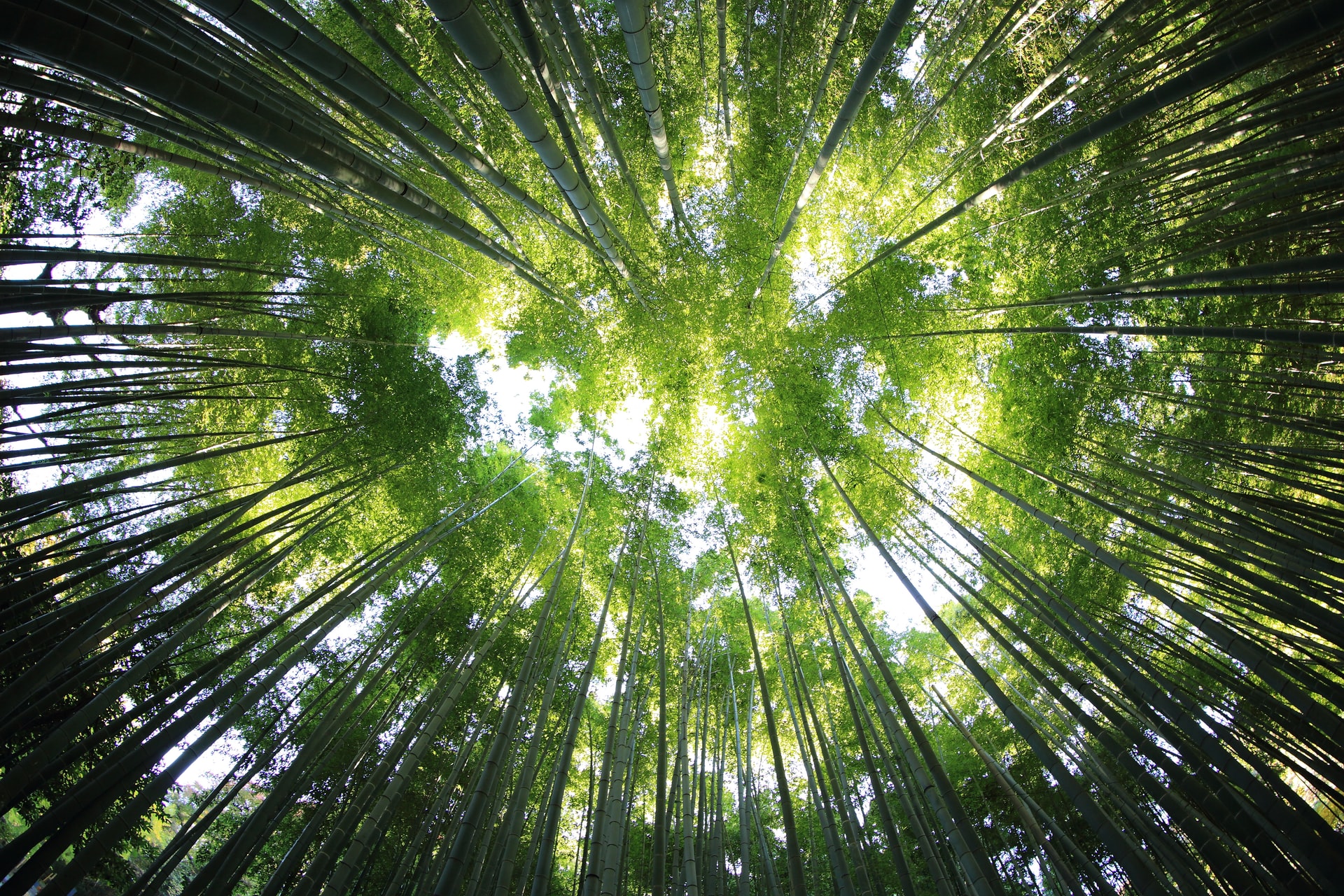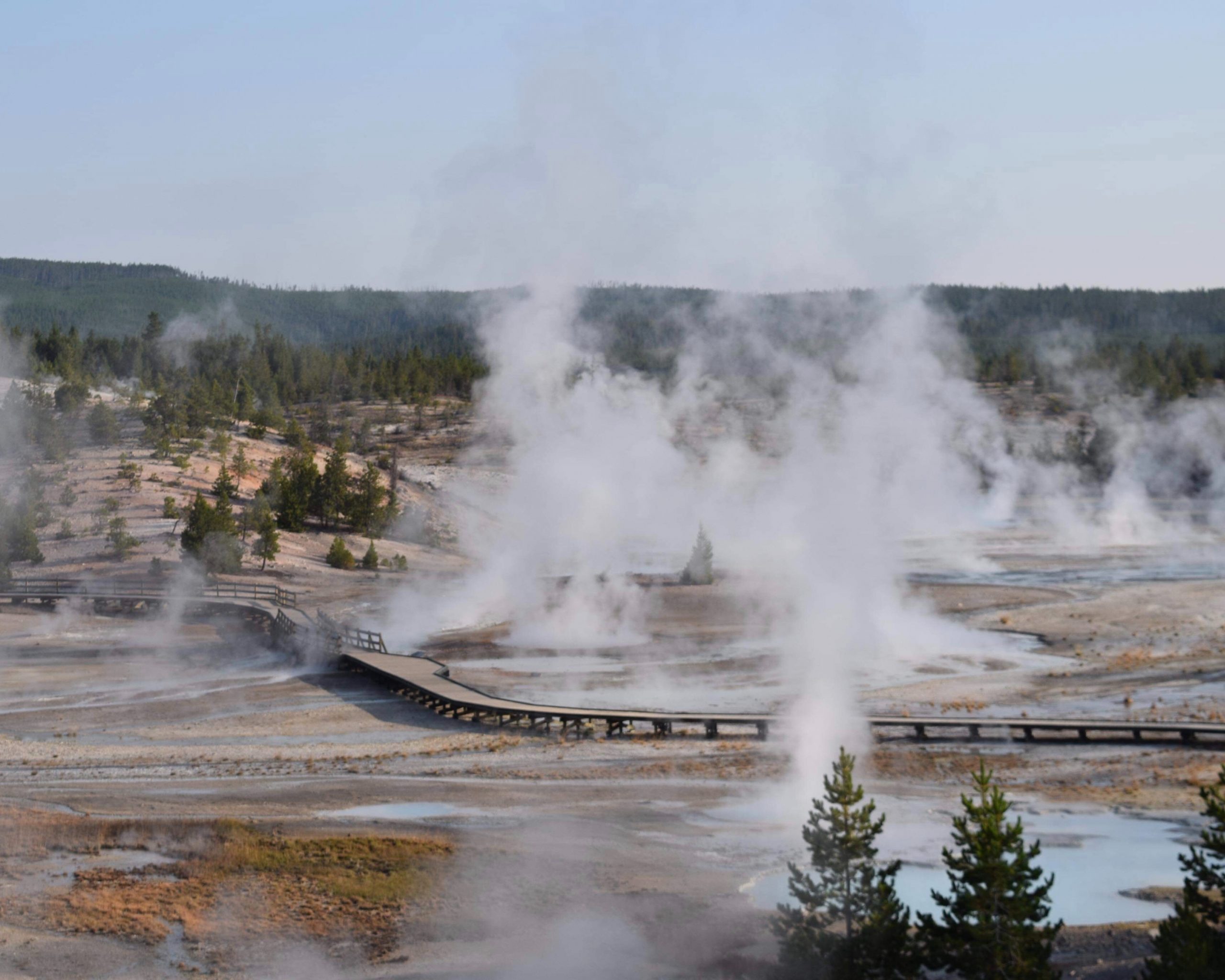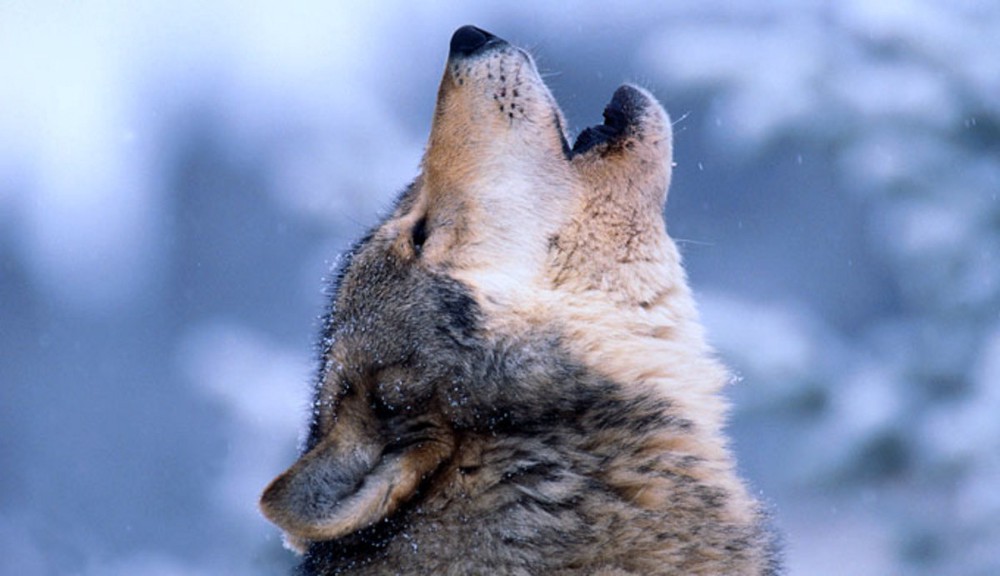A tried and tested systemic procss with 3.8 billion years of practice
If you would like to start at the beginning of the series, An Economy of Place Part I starts here.
In part 4 of this series, we shed some light on how the way in which we think — our paradigm of thought — affects the way in which we design our world around us. In this part we explore a new narrative, a new design model on which we can base future design for the places of the world.
If we agree that the dominant economic logic of the 20th century has been as mechanistic machine, peppered with some more value-led models, and yet we recognise that these have had a overall deleterious effect on both the stability of our planetary ecosystem and the quality of human connection — what kind of new narrative or model could replace and transform it?
What could change the nature of constantly striving for every more efficiency and growth, organised through hierarchical management systems and measured by profits and GDP, the proliferation of extractive places? What could stop the onslaught of growth in megacities with their attendant air pollution, rabid unsustainable consumption patterns, and crowded conditions?
What would cities look like that are designed for all live to thrive not just produce, be efficient, and function well to serve the economy? What would tourism look like if it had development of human wisdom and connection at its heart instead of footfall and per capita spend? How would we build our homes if we thought first of what creates mental health and wellbeing rather than the functionality of flows and movement between rooms? What could make housing developments focus on quality of life and environment instead of investor profits, or shift the explosion of mega-farms chasing productivity with chemical interventions that have destroyed biodiversity and soils. What would be the role of our great estates if we stepped away from hierarchical community philanthropism to collective resilience?
It’s said that when the pupil is ready the teacher will appear. It’s also possibly true to say that when the time is right, an idea will take flight. There is an emerging story but it’s not a new one. It’s a story and process which has been tried and tested for 3.8 billion years. It is the way of nature. The way of living systems.
What are the main principles of living system design?
Many great minds have contributed to the understanding of how living systems or complex adaptive systems work including Russel Ackhoff, Peter Senge, Fritjof Capra, Carol Sanford, Daniel Christian Wahl, the legendary Donella Meadows among many others. I summarise only a small part of this great body of work here for the purposes of laying out the foundation on which we can build a new vision for places as living, thriving systems in which life flourishes. This work covers general systems theory, open systems, systems thinking, complexity science, quantum science and more.
The fundamental difference between mechanisms and living systems is the ongoing order or patterns which emerge from the interaction among the parts (sub-systems) within the system. It is also the fact that the behaviour of a complex adaptive system cannot be predicted or understood by observing and understanding the behaviour of the parts of the system. The complex and dynamic interaction produces its own unique behaviour that is adaptive to its circumstances. It is through the ‘self-organization of the components that life emerges and becomes self-replicating’.
We start from a premise of understanding what a healthy living system actually looks like, and how it works. Living systems derive their fundamental design principles from the way in which life on earth has operated and evolved for billions of years. They can be seen and experienced in nature, but also in the way in which we have designed constructs in the world around us. Cities are complex adaptive systems. Most national health systems are complex adaptive systems.
I will give some examples in nature, but our end goal is to understand these principles and how we can apply them to our place-sourced design which of course includes humans as part of the living system rather than separating us out through just observing what goes on in nature. Each point could be an essay in itself and we will explore each more during the series.
1) Creating the conditions conducive to life
The first and foremost principle is that life creates the conditions conducive to life — a phrase which I first heard from Janine Benyus at The Biomimicry Institute.That principle manifests in many different ways. Let’s take a fruit tree. A fruit tree produces an abundance of fruit that is available as food to a wide variety of species. It shares its abundance with anyone from bees who feed on the nectar of the flowers, to other insects who devour the over-ripe and rotting fruit, to birds and small mammals like squirrels, to humankind who make beverages and food from their fruit.
A tree doesn’t keep growing upwards forever; it reaches an optimum height and then continues to share its bounty with its surrounding community until it wearies and slows its production as it ages. Fallen fruit or fallen trees may be seen by humans as waste but nature recycles it into nutrients for the soil in which new fruit trees grow which closes a loop on the cycle of life by fertilising the soil. The fruit tree also produces seeds so that new fruit trees may sprout and its existence as a species continues.
The golden rule to stay in the game of life is to ensure in your design

Just one idea within this concept should give us pause for thought. Nothing in nature continues to grow forever. Not even a coronavirus, even though it may feel like that at the moment. It grows to its optimum capacity and then, unless disturbed or disrupted by another force, it shifts into allowing other species to grow and thrive, until its time comes to pass into history. A tree grows to its maximum height and then fulfils a role of providing nourishment, nutrients and habitation for other life to thrive for the rest of its nature life, continuing even to renew the soil after it finally falls. As regenerative practitioners we are often like trees — planting other trees in whose shade we shall never sit.
What do cities and towns look like that deliberately do not continue to expand? What does tourism look like that doesn’t focus on growing footfall? What do housing developments look like that create thriving biodiversity beyond hedgehog corridors and a bit of pretty planting? How do you design a museum so that it creates more life instead of celebrating only past lives? How do we design for things to end, for death and closure rather than constant continuance?
Specific ways in which nature creates the conditions conducive to life can be seen in several existing human adaptations of nature’s intelligence:-
- Biomimicry: construction, product design, social innovation
- Waste management: the circular economy, closed loop recycling systems, cradle to cradle design
- Regenerative agriculture: soil revitalisation, re-forestation, agriforestry, permaculture
There are five key questions to ask ourselves here in any design or project or organisation we work on in our locality:-
- How can I ensure I create conditions conducive to thriving human life in my locality?
- How can I ensure I create conditions conducive to thriving ecological life in my locality?
- How can I ensure what I do in my locality contributes to thriving human life in a global context?
- How can I ensure what I do in my locality contributes only to thriving ecological life in a global context?
- Where I encounter challenges in transforming existing systems, what would nature do to continue life?
2) Living systems are inter-connected and inter-dependent across nested systems
The human body is a complex living system: we have multiple different systems that operate entirely independently with multiple different parts that form each of those whole systems .Our circulatory system includes plasma, blood corpuscles, veins, the heart. But that system is intimately interwoven with our respiratory system which provides oxygen to it and transports carbon dioxide away. If neither are working optimally, very quickly our muscular system will start to suffer from lack of oxygen to build muscle as lactic acid builds up, and if our muscular system doesn’t work well, we may not be able to exercise easily, will put on weight and our heart function will be impaired. The inter-connected, nested inter-dependence is a primary characteristic of all living systems.
We know from human interventions in bio-systems how easy it is to de-stabilise interdependent ecosystems. When the grey wolf was eradicated from Yellowstone National Park, the rapid increase in the elk population gradually destabilised the grasslands of the park through over grazing but also caused the elk population to face boom and bust periods of starvation — as larger herds were no longer able to weather the changes in droughts that were coming with increasing climate change. Within 20 years of re-introducing the apex predator — otherwise described as a keystone species — into the Park, elk herds are stabilising and the ecosystem is recovering.The wolf and elk are part of the Park ecosystem, and the park ecosystem is part of the wider system of rainfall that enables the bioregion to thrive.


Useful questions here include:-
- How do we identify the nested ecological systems with which we interact and on which we are interdependent in our locality?
- How do we identify the cultural/social/political/business nested systems with which we interact and on which we are interdependent, and how do we understand the positive/negative impacts of these human contracts?
- How do we identify the nested ecological systems with which we interact and on which we are interdependent globally?
- How do we identify the nested the cultural/social/political/business nested systems with which we interact and on which we are interdependent on a global scale, and how do we design disengagement from those if necessary?
3) Living systems constantly adapt and evolve in response to their context and circumstances
The Amazon rainforest is a complex living system. Within any natural system, there is an aliveness that is inherently unpredictable and constantly changing. In biology, life always evolves from the simple to the complex, answering the call of an evolutionary drive that is constantly adapting to emergent circumstances around it. Within a rainforest, plants, animals, microbes continually reproduce, grow and die. Rivers follow the contours of the land in their part of the rainfall system, but also change the land over time, adapting and adjusting to levels of rainfall, carving new shapes and curves in the rock through which they flow. Yet, within all this adaptability and constant change, the rainforest (unless it is subject to humankind’s intervention) remains a rainforest. There is also continuity in constant evolution, a paradox that is hard to comprehend initially. In place this emerges as vocation and role.
Useful questions here include:-
- How do we better understand the ecological and cultural context and circumstances of our place and how we respond to those?
- How do we design a way of working and living that is adaptable to constant change and maintains resilience in unexpected circumstances?
- How do we redesign our approach to long term strategy and goal setting to deliver against a constantly changing dynamic?
- What is constant about our place: what is the unique biological and cultural heritage of our place?
- What is our role and vocation in evolutionary change?
4) Diverse species live in co-evolutionary harmony and balance
A coral reef is a complex living system. When healthy it gives a home to millions of different organisms and species, all of whom live in harmony and balance with each other. Take the parrot fish and anemone. Although radically different species, they provide important services to each other that mean the one could not thrive without the other. The anemone provides safe haven for the parrot fish from her predators through the stings on the of her tentacles to which the parrot fish has evolved a resistance and tolerance. Although the sting being triggered uses up a lot of the anemones energy, the parrot fish also provides new energy by waggling through the waters around all parts of the anemone and helping to oxygenate the water. The fish also provides nutrients through its excrement that the anemone can feed from.
Elisabet Sahtouris said it well: “the best life insurance for any species in an ecosystem is to contribute usefully to sustaining the lives of other species, a lesson we are only beginning to learn as humans.” More on the human understanding of competition in later parts of this series, but here is another key principles of living systems: they participate in collaborate co-evolution, even though inevitably there is death and some species eventually die out. The species that continue are those who have most successfully contributed to the continuance of life and adapted and evolved alongside it.
Useful questions to explore here are:-
- How do we recognise the relationships that exist in our ecosystem?
- How do we best understand which of these relationships are core and critical points of change?
- How do we integrate greater diversity into our place and organisation?
- How do we explore and create the space for more collaboration across stakeholders and inhabitants to occur?
5) They have systemic reciprocity
A plot of ancient woodland or a flower meadow is a complex living system. Underneath the soil lies an intelligent web of life called mycelium which helps to organise a mutually beneficial exchange of resources, energy and material among the trees, grasses and flowers. The diversity of the living entities in the woodland or meadow will have differing needs for water, or flower and bloom at different times of the season. The mycelial network helps to divert nutrients to those parts of the plant landscape that need it most at any one time. The diversity and mutual reciprocity within that diversity adds value to the whole system.
- How can you create more systemic and life-affirming value for others within your system?
- How can they create more systemic and life-affirming value for you?
- How can you find ways to know better how and when to share your bounty and abundance?
6) Energy flows of Divergence, Convergence, Emergence
There is a continual flow of energy in natural processes called divergence, convergence and emergence.
Divergence occurs in nature when a spontaneous change of variance or polarity occurs, a branching into different parts such as if two groups of the same species evolve different traits within those groups in order to accommodate for differing environmental and social pressures. A good example is the divergent between dogs and wolves who both evolved from a common ancestor. Any system in nature also has divergent parts.
Nature forms convergent wholes from its divergent parts. Those parts come together to form a coherent entity in the same way in which a city is comprised of neighbourhoods, a development of different houses, a tourism destination of different experiences and places to stay. The process of divergence brings new creativity and development, whereas the process of convergence of those new developments continues to give shape, form, function and boundaries to the stable whole.
The constant swing between divergence and convergence is called emergence. As Michelle Holliday writes in The Age of Thrivability: “this is the great promise of living systems — that new things become possble and new forms take shape.”
Useful questions to consider:
- How does my place or organisation allow for divergence — creativity and disruption — to occur?
- How does my place or organisation allow for convergence to happen to that there is reasonable order after a period of disruption?
- How do we design the processes that allow for this constant divergence and convergence to happen within the boundaries of a stable ecosystem and culture?
Summary Principles
- Living systems create the conditions conducive to life to continue.
- Living systems are interconnected and interdependent groups of sub-systems which are ‘nested’ together
- Living systems are always changing, adapting and evolving
- Diversity drives creativity, systemic resilience through a process of co-creative and collaborative evolution
- Living systems add constantly evolving value through a process of mutual systemic reciprocity
- All systems operate in a constant state of divergence (disruption), convergence (stabilisation) which allows for emergence (constant relevant and contextual change) to occur.
The Economy of Place is a series of articles by Jenny Andersson that are edited parts of her unpublished book Renewal. There are 20 parts to this paper which will be published here in due course. If you would like early notification of future releases, please register at Really Regenerative — Economy of Place.
Further reading:
The Age of Thrivability, Michelle Holliday
Natural Intelligence, Leen Gorrisen
Regenerative Leadership, Hutchins & Storm
Biomimicry, Janine Benyus


Recent Comments